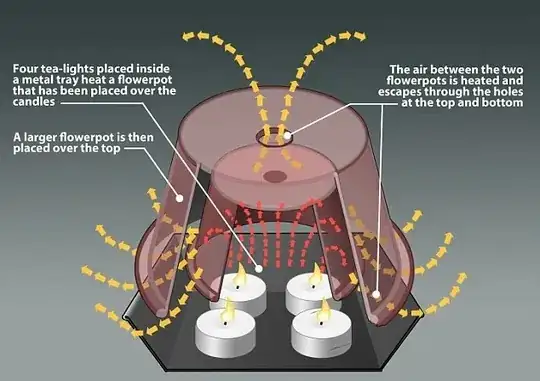It is a common suggestion amongst greenhouse enthusiasts that a long-burning tea light inside an upturned terracotta pot can be enough to keep frost away from plants. Is this possible?
Instinctively, it feels wrong: in winter, a greenhouse does not retain heat well so I don't feel a candle can output enough heat to be noticeable, see e.g. this.
From what I could find out, a regular tea light has about $550$kJ of energy. The long-burning ones I would guess, are twice as much so let's say $1100$kJ. Regarding power, they can produce $30$ watts of heat according to this source. Let's say the greenhouse is smallish, about $2.5$m$\times 2$m. I'm not sure where to go from here to calculate the candle's effect.
